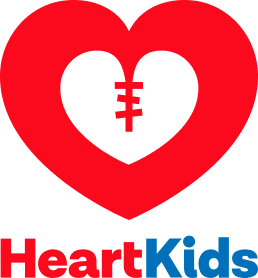Exercising With Your Heart Condition
Information developed in collaboration with doctors and other health experts on exercise and physical activity for people with Childhood-onset Heart Disease (CoHD).

Can I Exercise?
Almost everyone with CHD can benefit from exercise.
Physically active lifestyles are important for people living with CHD. It’s about finding a way to be active in a way that is safe and beneficial for you. There are many different types of CHD. Some people with CHD have almost normal heart function. Other people have more complex problems that mean they need to take extra care when exercising or avoid certain exercises. Before you start exercising, talk to your doctor or cardiologist about your condition. They can provide advice suited to your situation.
Benefits of Exercise include:
- Fitness and strength. Exercise improves your cardiorespiratory fitness and muscle strength, allowing you to do more activities.
- Mental health and happiness. Many studies show that exercise improves mental health and quality of life.
- Healthy weight and body image. Exercise helps you to maintain a healthy weight, which can also improve self-confidence and body image.
- Meeting new friends. There are many opportunities to meet new people through community sport or other activities.
- A healthy heart. Exercise reduces your risk of acquiring cardiovascular problems (like high blood pressure, a stroke or heart attack).

Exercise Ideas
Walking
Swimming
Yoga
Cycling
What kind of exercise should I do?
Exercise programs generally include:
- Aerobic exercise (like walking, running or swimming). This helps to build heart and lung fitness
- Strength training (like weights). This helps to build muscle strength and endurance.
The safe level of exercise intensity depends on your heart condition.
Your cardiologist can provide some guidelines and may involve an exercise physiologist to provide additional guidance.
If that seems like too much, start with a smaller goal and work your way up to it. Or you may already be hitting these goals without even knowing it. Moderate exercise is anything that gets your heart beating faster, without making you breathless. It includes activities like a brisk walk, a swim, or even mowing the lawn.

Tips to getting started
- Start slowly and set realistic goals. Starting with just a few minutes a day can help to improve fitness. You can keep building your goals up as your fitness improves.
- Choose activities you enjoy. Exercising is easier when you are having fun. This will help you to stick to your goals.
- Exercise with a friend. Try organising a walk or activity with a friend or family member for extra motivation.
- Make active choices. Simple activities such as taking the stairs or walking rather than driving can help to improve your overall health. Everystep counts.
Exercise guidelines for Australians (aged 18 – 64 years) recommend at least
Of moderate exercise mostdays of the week

Where to find more information and support

Exercise Right

Department of Health
This resource helps people living with chronic conditions or illness to exercise right for their specific needs.
Learn more about physical activity and exercise guidelines for Australians.
How do I make sure I’m exercising safely?
Being active is a great way to improve your heart health and overall health. In fact, regular exercise is one of the best things you can do for your heart health. If you feel any negative symptoms while exercising, stop the activity and seek medical advice. Symptoms to look out for include:
- Palpitations or irregular changes in your heartbeat
- Chest discomfort or pain
- Dizziness or feeling faint
- Difficulty breathing
- A general unwell feeling
If you are unsure about how to exercise safely, your doctor can provide advice on the kinds of exercise that are best suited for you. They may refer you to an exercise professional (like an exercise physiologist or physiotherapist) who can help you make a plan to build your fitness in a safe and beneficial way.
References
1 LONGMUIR, P., BROTHERS, J., DE FERRANTI, S., HAYMAN, L., VAN HARE, G., MATHERNE, P., DAVIS, C., JOY, E. & MCCRINDLE, B. 2013. Promotion of Physical Activity for Children and Adults With Congenital Heart Disease: A Scientific Statement From the American Heart Association. Circulation, 127, 2147-2159.
2 DEPARTMENT OF HEALTH (2021). “Physical activity and exercise guidelines for all Australians.” Accessed March 2021. Available: Online
